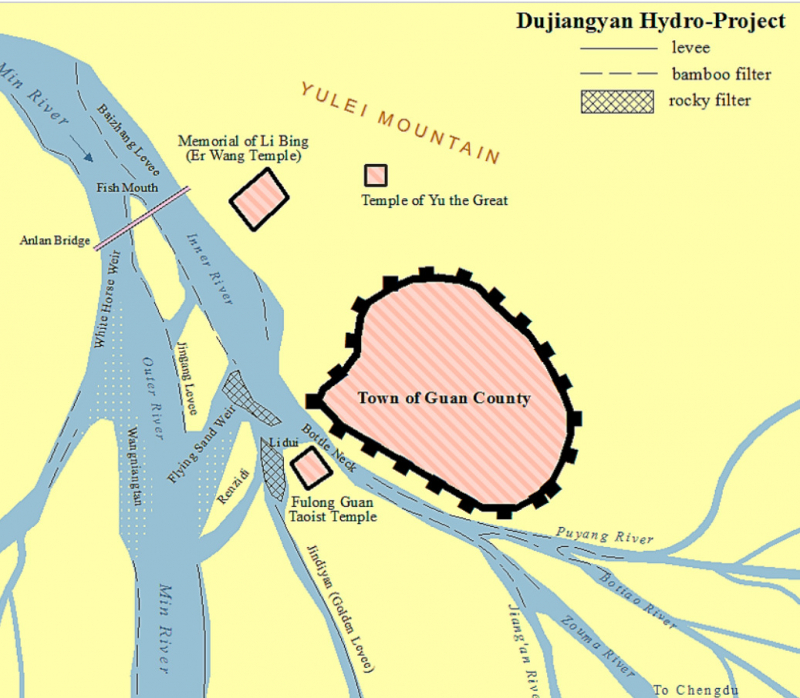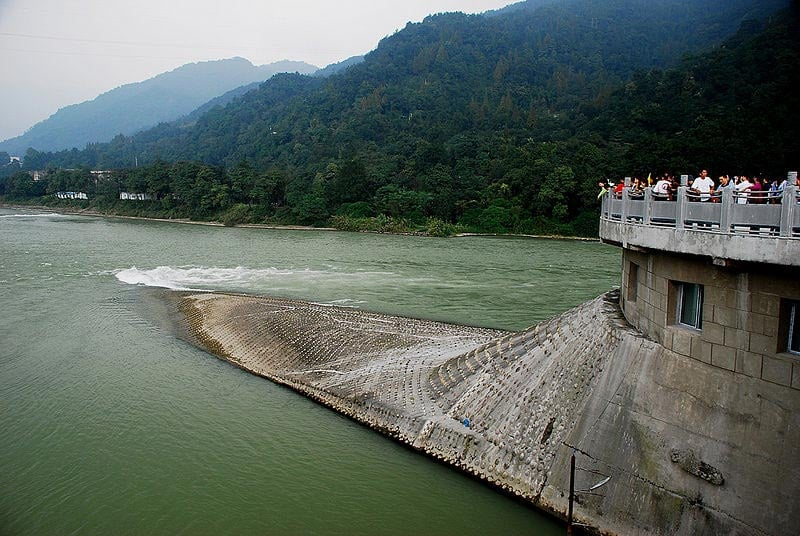Construction of Dujiangyan irrigation system
Residents who lived along the banks of the Min River experienced yearly floods during the Warring States era. Li Bing, a Qin hydrologist, found that the river was inflated by strong currents from nearby mountains that burst its banks when it got to the lower, slowly flowing, and densely alluvial part. A dam might have been erected as a solution, but the Qin preferred to maintain the waterway's accessibility for military vessels resupplying troops along the frontier. As a result, an artificial levee was constructed to redirect a portion of the river's flow, and then a canal was excavated through Mount Yulei to release any excess water into the distant, parched Chengdu Plain.
Tens of thousands of soldiers were dispatched by King Zhao of Qin to construct the system, along with 100,000 taels of money. The Zhulongs, which are long, sausage-shaped bamboo baskets loaded with stones and used to construct the dike, are secured in position by Machas, wooden tripods. And this construction of a dike that carried water like the mouth of a fish took four years to complete.
Dujiang Yuzui (fish mouth), Feishayan, and Baopingkou are the three primary components that make up the Dujiangyan Irrigation System's focal works. The Mingjiang River's water is diverted by the diversion dam Dujiang Yuzui into the Outer River and the Inner River. When the Inner River floods, Feishayan serves as a spillway to transfer extra water and sand to the Outer River. An irrigation system inlet called Baopingkou has automated flow control. These three components work together as an organic whole to perform a wide range of tasks, including water diversion, flood discharge, sediment discharge, sedimentation, and autonomous irrigation water control.
The initiative not only mitigates floods but also elevates Sichuan to China's most prosperous agricultural area. Built-in 256 BC, it is still in use today to irrigate more than 5,300 square kilometers of land. The Dujiangyan Irrigation System is considered an important building in the development of Chinese science and is still in use today. It is also the oldest surviving dam-free irrigation system in the world and is a UNESCO World Heritage Site.
To conclude, the Qin Dynasty constructed the Dujiangyan irrigation system:
- Tens of thousands of soldiers were dispatched by King Zhao of Qin to construct the system, along with 100,000 taels of money, and took four years to complete.
- The Dujiangyan Irrigation System involved three components: the Dujiang Yuzui (fish mouth), Feishayan, and Baopingkou.
- It was considered an important building in the development of Chinese science, also the oldest surviving dam-free irrigation system in the world, and is a UNESCO World Heritage Site.










